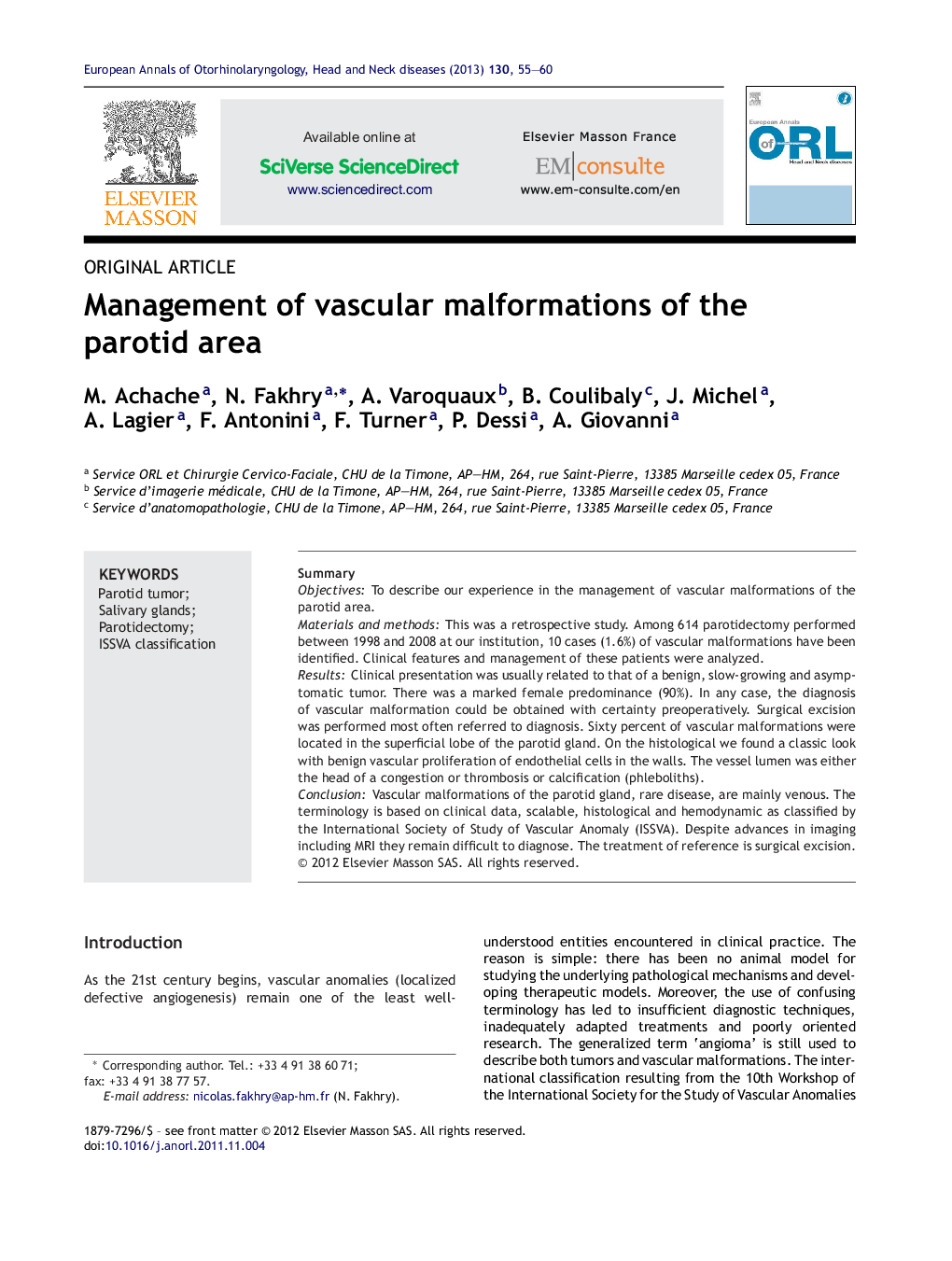| Article ID | Journal | Published Year | Pages | File Type |
|---|---|---|---|---|
| 4110244 | European Annals of Otorhinolaryngology, Head and Neck Diseases | 2013 | 6 Pages |
SummaryObjectivesTo describe our experience in the management of vascular malformations of the parotid area.Materials and methodsThis was a retrospective study. Among 614 parotidectomy performed between 1998 and 2008 at our institution, 10 cases (1.6%) of vascular malformations have been identified. Clinical features and management of these patients were analyzed.ResultsClinical presentation was usually related to that of a benign, slow-growing and asymptomatic tumor. There was a marked female predominance (90%). In any case, the diagnosis of vascular malformation could be obtained with certainty preoperatively. Surgical excision was performed most often referred to diagnosis. Sixty percent of vascular malformations were located in the superficial lobe of the parotid gland. On the histological we found a classic look with benign vascular proliferation of endothelial cells in the walls. The vessel lumen was either the head of a congestion or thrombosis or calcification (phleboliths).ConclusionVascular malformations of the parotid gland, rare disease, are mainly venous. The terminology is based on clinical data, scalable, histological and hemodynamic as classified by the International Society of Study of Vascular Anomaly (ISSVA). Despite advances in imaging including MRI they remain difficult to diagnose. The treatment of reference is surgical excision.
